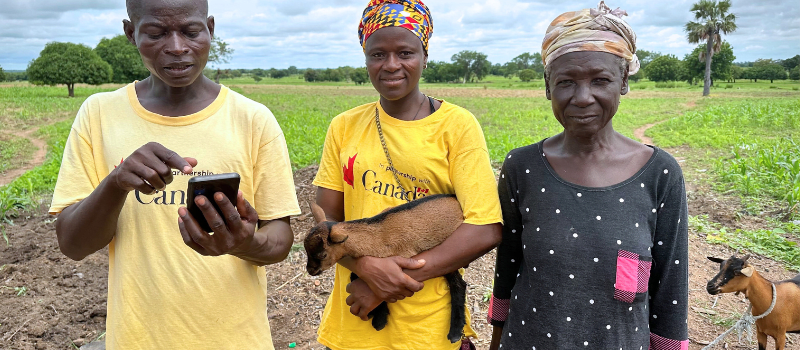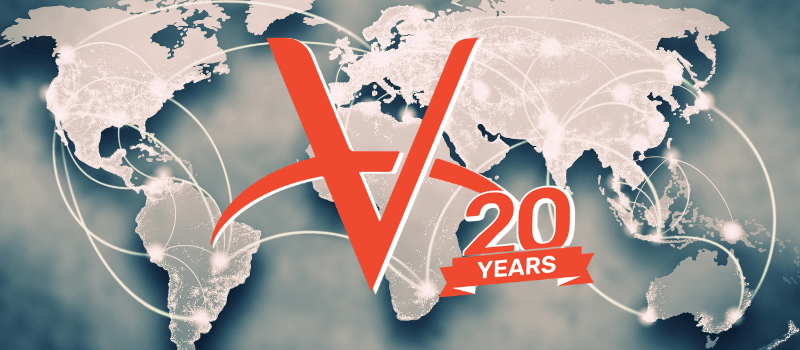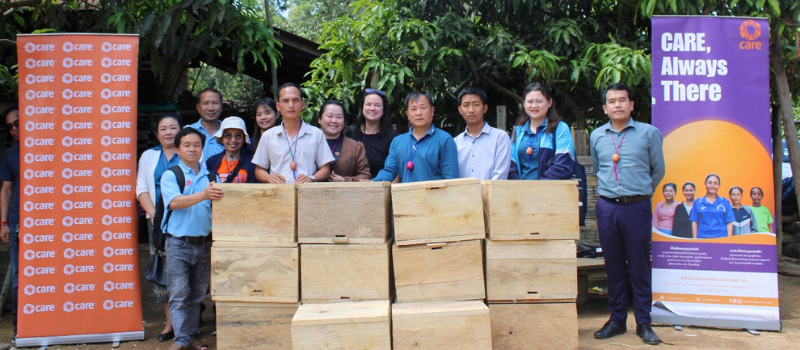As part of Veterinarians Without Borders/Vétérinaires Sans Frontières' One Health mission, our teams are dedicated to helping to prevent the spread of zoonotic diseases, (diseases that can pass between animals and humans). From Canada's remote North to Sub-Saharan Africa and Southeast Asia, our teams and partners are using routine animal vaccinations to prevent the spread of illnesses like rabies, anthrax, and more, which can be passed from companion and farm animals to humans. Ensuring the health and proper management of animals and the environment that sustains us is integral to realize the benefits and prevent the risks they can represent.
One zoonotic disease that is currently posing a threat in countries like South Sudan and Kenya, where VWB/VSF operates, is Rift Valley fever (RVF). Although the disease is regularly found in parts of Africa, and poses a significant threat to public health, livestock, and the economy, El Niño can create particular risks for outbreaks across these regions.
What is El Niño?
El Niño refers to the warming of the surface waters in the eastern tropical Pacific Ocean, which has significant implications for global weather patterns. This is a climatic event that occurs irregularly every few years and can last for several months. El Niño affects rainfall patterns, atmospheric circulation, and temperature, leading to a wide range of climatic anomalies worldwide.

Former VETS volunteer, Jessica, working with farmers in Kenya to assess the health of their cows.
How is El Niño connected to Rift Valley Fever?
The link between El Niño and RFV can be found in the impact of El Niño on rainfall patterns. During an El Niño event, areas like Kenya and South Sudan often experience unusually high rainfall, resulting in flooding and the creation of numerous temporary water bodies. These conditions favor the breeding of floodwater mosquitoes, particularly those of the Aedes and Culex genus, which are the primary vectors responsible for transmitting the RVF virus.
Mosquitoes play a crucial role in the transmission cycle of RVF. They breed in standing water, and the increased availability of breeding sites due to heavy rainfall and flooding, increases their reproduction. Mosquitoes become infected when they bite infected animals, and some species can also transmit the virus directly to their offspring. Infected mosquitoes than transmit the virus to livestock and, to a lesser extent, humans through bites. Livestock, especially cattle, sheep, and goats, are highly susceptible to RVF and act as amplifying hosts, further spreading the virus to humans through direct contact with infected animals or their products.
How are RVF outbreaks affecting farm animals and people?
RVF outbreaks can have severe consequences in multiple ways. From a public health perspective, the disease can cause flu-like symptoms in humans. In some cases, it can lead to more severe manifestations, such as hemorrhagic fever and, sadly, even death. The economic impact is also significant, as RVF outbreaks can result in the death of livestock, reduced productivity, and restrictions on the movement of animals and their products. This, in turn, affects the livelihoods of communities that heavily rely on livestock farming.
Former VETS volunteer, Jessica, working with farmers in Kenya to assess the health of their cows.
Ways to prevent RVF outbreaks
Vaccinating farm animals against RVF is used in many countries, particularly in high-risk areas. Vaccination helps reduce the likelihood of animals getting infected and serves as a crucial preventive measure. Vaccines that use a similar technology to some of those developed for COVID-19 have also been developed and were recently shown to be safe and generate a strong immune response in humans. Another strategy to help prevent the spread of RVF is to strengthen disease surveillance systems by training farmers and other community members to detect RVF cases in animals and humans promptly. Early detection can allow for timely response and containment efforts. Educational campaigns to raise awareness about RVF, its transmission, and preventive measures, emphasizing personal protection measures, is also important. This can include encouraging the use of, and providing access to, mosquito repellents, wearing protective clothing, and practicing good hygiene and food safety.
These strategies are especially important in areas with limited access to resources or where veterinary services may be disrupted, such as Sudan and South Sudan, where, historically, RVF has caused significant outbreaks. For example, during an outbreak in 2007, 222 people in Sudan were reported to have died(with 700 hundred cases identified).

Vaccinating cattle in South Sudan.
How is VWB/VSF helping?
Currently, VWB/VSF is evaluating how we can work with our on-the-ground partners to assess the threat of RVF and provide increased support for disease prevention as well as to mitigate the impacts of the disease in the event of an outbreak.
Interested in helping to support community animal health workers and vaccination campaigns in places like Kenya and South Sudan? Learn how!




